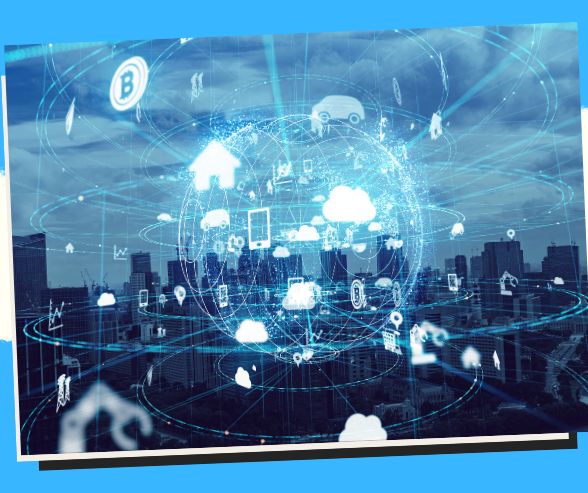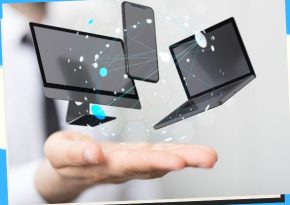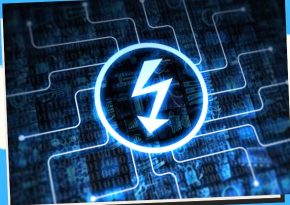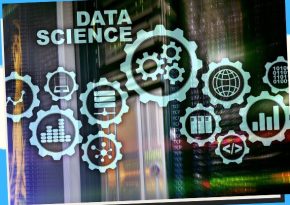
Revolutionizing Mobility: The Remarkable Journey of Mobile Computing Power and Battery Life 

Uncover the secrets behind battery breakthroughs that are paving the way for unleashing the full potential of mobile computing.
Unleashing the Evolution of Mobile Computing Power and Battery Life 


In the palm of your hand lies a technological marvel – your smartphone. It’s your gateway to the digital universe, a pocket-sized powerhouse that connects you to the world, entertains you, and empowers you to be more productive. Behind this modern wonder lies a fascinating journey – the evolution of mobile computing power and battery life. In this article, we’ll embark on a voyage through time, exploring the remarkable progress in mobile computing and the ever-persistent quest to extend battery life.
The Pioneering Days of Mobile Computing 


Before we dive into the present, let’s journey back to the inception of mobile computing. The early mobile devices were far from the sleek smartphones we use today. They were bulky, limited in functionality, and had battery lives measured in hours rather than days.
1. The Birth of Mobile Computing 

The concept of mobile computing dates back to the 1970s when clunky “luggable” computers like the Xerox NoteTaker and the Osborne 1 debuted. These portable computers were more transportable than truly mobile, consuming power voraciously.
2. Brick-Sized Mobile Phones 

The 1980s witnessed the emergence of mobile phones, although they were more like portable bricks than the sleek devices we have today. These early mobile phones had limited computing capabilities and relied on analog networks.
3. The Rise of PDAs 

The late ’90s saw the rise of Personal Digital Assistants (PDAs) like the Palm Pilot and the Psion Series 5. These devices were primarily designed for tasks like note-taking and scheduling.
4. Early Mobile Computing Devices 

The early 2000s saw the advent of handheld computers like the BlackBerry and the first Pocket PC devices. These devices offered email and basic web browsing capabilities but had limited battery life.
The Smartphone Revolution 


The real game-changer in the evolution of mobile computing was the introduction of smartphones. Combining powerful processors, high-resolution displays, and connectivity options, smartphones revolutionized the way we interact with technology. However, they also posed a significant challenge – balancing computing power with battery life.
1. The First iPhone 

Apple’s release of the first iPhone in 2007 marked a turning point in mobile computing. It featured a touchscreen interface, a robust mobile operating system (iOS), and a powerful processor. However, battery life remained a concern, and early iPhone models struggled to last a full day on a single charge.
2. Android’s Ascent 

Google’s Android operating system entered the scene, offering a range of smartphones with diverse hardware and software features. This competition spurred innovation, with manufacturers racing to deliver more powerful devices with extended battery life.
3. The Role of Lithium-Ion Batteries 

Lithium-ion batteries became the standard for mobile devices. These batteries offered a high energy density, making them ideal for compact, portable gadgets. However, their capacity had limitations.
4. Energy-Efficient Processors 

Mobile processors evolved to become more energy-efficient while delivering better performance. Manufacturers like Qualcomm, Apple, and Samsung developed chipsets optimized for mobile use, striking a balance between power and efficiency.
5. Advancements in Display Technology 

Improvements in display technology, such as OLED and AMOLED screens, allowed for more vibrant visuals while consuming less power than traditional LCD screens.
6. Fast Charging Technologies 

Fast charging technologies like Qualcomm’s Quick Charge and OnePlus’ Warp Charge became standard features, allowing users to charge their devices quickly when needed.
7. Battery Optimization Software 

Operating systems incorporated battery optimization features, such as background app restrictions and adaptive brightness, to extend battery life.
The Age of Mobile Multitasking and Connectivity 


As smartphones evolved, their capabilities expanded. Users began to rely on their devices for calls and texts and a wide range of tasks, from streaming video to mobile gaming. This shift placed even greater demands on both processing power and battery life.
1. Multicore Processors 

Smartphones started featuring multicore processors to meet the demands of multitasking and resource-intensive apps. These chips divide tasks among multiple cores, improving efficiency and performance.
2. 4G and 5G Connectivity 

The introduction of 4G and later 5G networks brought faster data speeds, enabling seamless streaming, video conferencing, and enhanced online gaming experiences. However, faster data speeds also meant increased power consumption.
3. Mobile Gaming Revolution 

Mobile gaming became a major industry, with
smartphones packing dedicated graphics processing units (GPUs) to handle demanding games. This required more robust processors and larger batteries.
4. Content Consumption on the Go 

Smartphones became primary devices for streaming video content, putting additional strain on battery life. Streaming services like Netflix and YouTube optimized their apps for power efficiency.
5. Enhanced Cameras and AR/VR 

The demand for better smartphone cameras and augmented reality (AR) and virtual reality (VR) experiences drove advancements in image processing and graphics rendering, necessitating more powerful hardware.
Innovations in Battery Technology 


While processing power and software optimizations played crucial roles in extending battery life, innovations in battery technology itself have also made significant contributions.
1. Higher Capacity Batteries 

Manufacturers have increased battery capacities to give users more energy throughout the day without significantly increasing device size.
2. Solid-State Batteries 

Still in development, solid-state batteries promise higher energy densities, faster charging, and improved safety compared to traditional lithium-ion batteries.
3. Graphene Batteries 

Graphene batteries are being researched for their potential to offer even higher energy densities, longer lifespan, and faster charging.
4. Energy Harvesting 

Energy harvesting technologies, such as solar panels on smartphone screens or piezoelectric materials, can convert ambient energy sources into electricity to recharge devices.
The Sustainable Future of Mobile Computing 


As we progress, sustainability is becoming an increasingly critical aspect of mobile computing. Consumers and manufacturers alike recognize the importance of reducing electronic waste and minimizing the environmental impact of our devices.
1. Modular and Repairable Devices 

Manufacturers are exploring modular designs, allowing users to replace components like batteries easily. Repairability is becoming a key consideration in smartphone design.
2. Longer Software Support 

To extend the usable lifespan of devices, manufacturers are providing longer software support and updates for older models.
3. Eco-Friendly Materials 

Companies are incorporating eco-friendly materials into smartphone construction, reducing their carbon footprint.
4. Recycling Programs 

Recycling programs and initiatives encourage users to dispose of their old devices responsibly, promoting the recycling and reuse of valuable components.
The Mobile Computing Odyssey Continues 


The journey of mobile computing power and battery life has been remarkable. From the brick-sized mobile phones of the ’80s to today’s pocket-sized supercomputers, the evolution has been driven by relentless innovation and a commitment to meeting the diverse needs of users.
As we look ahead, we can anticipate even more exciting developments. Technologies like foldable displays, AI-driven optimizations, and sustainable design practices will continue to shape the future of mobile computing. One thing is certain: the odyssey of mobile computing is far from over, and the next chapter promises to be as thrilling as the last.
Related Queries










Save/Share this story with QR CODE
Disclaimer
This article is for informational purposes only and does not constitute endorsement of any specific technologies or methodologies and financial advice or endorsement of any specific products or services.
 Need to get in touch?
Need to get in touch?

We appreciate your reading. 
1.) 

Your DONATION will be used to fund and maintain NEXTGENDAY.com
Subscribers in the Philippines can make donations to mobile number 0917 906 3081, thru GCash.
3.) 
4.) 
AFFILIATE PARTNERS

World Class Nutritional Supplements - Buy Highest Quality Products, Purest Most Healthy Ingredients, Direct to your Door! Up to 90% OFF.
Join LiveGood Today - A company created to satisfy the world's most demanding leaders and entrepreneurs, with the best compensation plan today.





 Unlock the secrets of technological transformation as we unveil […]
Unlock the secrets of technological transformation as we unveil […]



